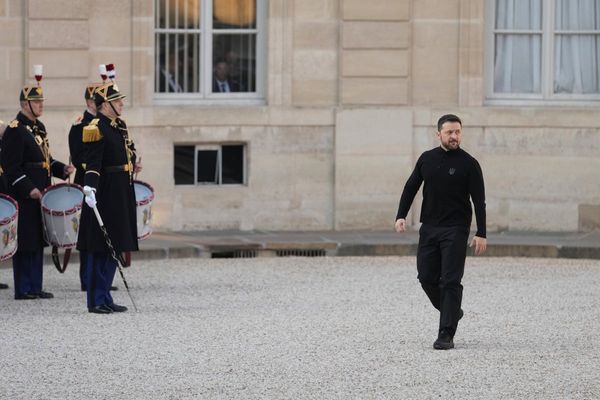
You can’t see over the top of a parked car anymore, because the top-selling cars in Australia are big utes. And they are getting bigger.
Not that long ago, we were a Corolla nation — small cars were the top-selling category. But that period in history is lost to time. Now, average-income families buy a Ford Ranger as their daily driver, and men with a need to prove something are forced into the next category up, full of ginormous RAMs and Chevrolet Silverados.
One reason is the lack of proper emissions regulations. Australia is the world’s dumping ground for high-pollution vehicles. Government is pledging, finally, to fix that.
Luxury car tax
But a bigger factor is the luxury car tax, which kicks in for vehicles valued at more than $76,950. The price category includes many of those big utes, with a new Ranger easily costing more than $100,000. However, commercial vehicles — defined as a ute that can carry more load than people — are exempt. If you have five seats, they call that 340kg of passenger capacity. So if you can put more than 340kg in the tray, that counts as a commercial vehicle and you don’t need to pay the luxury car tax.

The Australian Tax Office pays no attention to how the vehicle is used in practice — it cares only for the design. This creates a massive tax break for the absolute worst cars on our road. The effect was modest back in the day when our top-selling cars were not commercial vehicles, but now it’s a joke. The tax exemption is extremely pertinent when Ford sells 5,000 Ford Rangers every month and Toyota sells almost as many Hiluxes.
The government’s brand new carbon reduction roadmap points out that most of our carbon emissions from transport come from light vehicles, i.e. the cars everyday people drive to work and for play. Trucks and planes matter, but the biggest part of the job of reducing transport emissions is getting people into lower-emissions vehicles.

There’s a lot more EVs and hybrids on the road these days, but Australia’s transport emissions are not coming down nearly as much as you might think. Some people are buying cars from outlets such as BYD and zipping about on electricity, but far more Australians are buying a Ford Ranger and turning large volumes of diesel fuel into loud roars.
Light commercial vehicles have 22% of the market, while SUVS are ascendant with 56% of new car sales, leaving the sedan/passenger car segment with just 18% of the market. Sedans and wagons used to be the family go-to but are becoming a weird, niche choice. We drive SUVs and “pick-up trucks” now.
“These vehicles consume more energy and fuel per kilometre than smaller vehicles, resulting in higher emissions and effectively cancelling out the savings made by higher EV sales,” says the new carbon reduction roadmap.
What it doesn’t point out, however, is the role the luxury car tax plays in helping people buy these big utes. Tradies are a protected species in Australia, and even though a lot of these utes are in the hands of office workers, university students, mums doing school drop-off, etc, moving against commercial vehicles would be political suicide.
Combined carbon
There are a lot of reasons to wish that every passenger car on the road was a Corolla. Inattentive drivers are everywhere, and if you get hit by a typical Corolla (weight 1,375kg, low bonnet), you’re far more likely to survive than if you get hit by a typical Ford Ranger (weight 2,216kg, high bonnet).
This danger is reason enough to get them off the road, but the carbon emissions may be an even stronger motivation. The next chart shows the trajectory of combined carbon emissions ratings for Australia’s top-selling cars over the past couple of decades.
At first, we were into the Holden Commodore, and it was a thirsty beast that belched carbon. Then petrol prices soared and, around 2011, Australians flipped to hatchbacks. These got more efficient over time, especially the Corolla, thanks to Toyota’s affinity for hybrid engines. But then petrol prices fell and we decided to go big. Hiluxes and Rangers vied for the top spot and the transport sector’s emissions worsened again. They are improving, but are still not as gentle on the atmosphere as a 2010 Mazda 3.
The luxury car tax can bear a lot of the blame for Australians being guided to these enormous cars. A truly courageous government would make luxury utes and “pick-up trucks” an explicit target for its emissions reduction scheme. But we all know truly courageous governments don’t last.
Should the government take action of gas-guzzling utes — even if it has to pay a political price? Let us know your thoughts by writing to letters@crikey.com.au. Please include your full name to be considered for publication. We reserve the right to edit for length and clarity.







